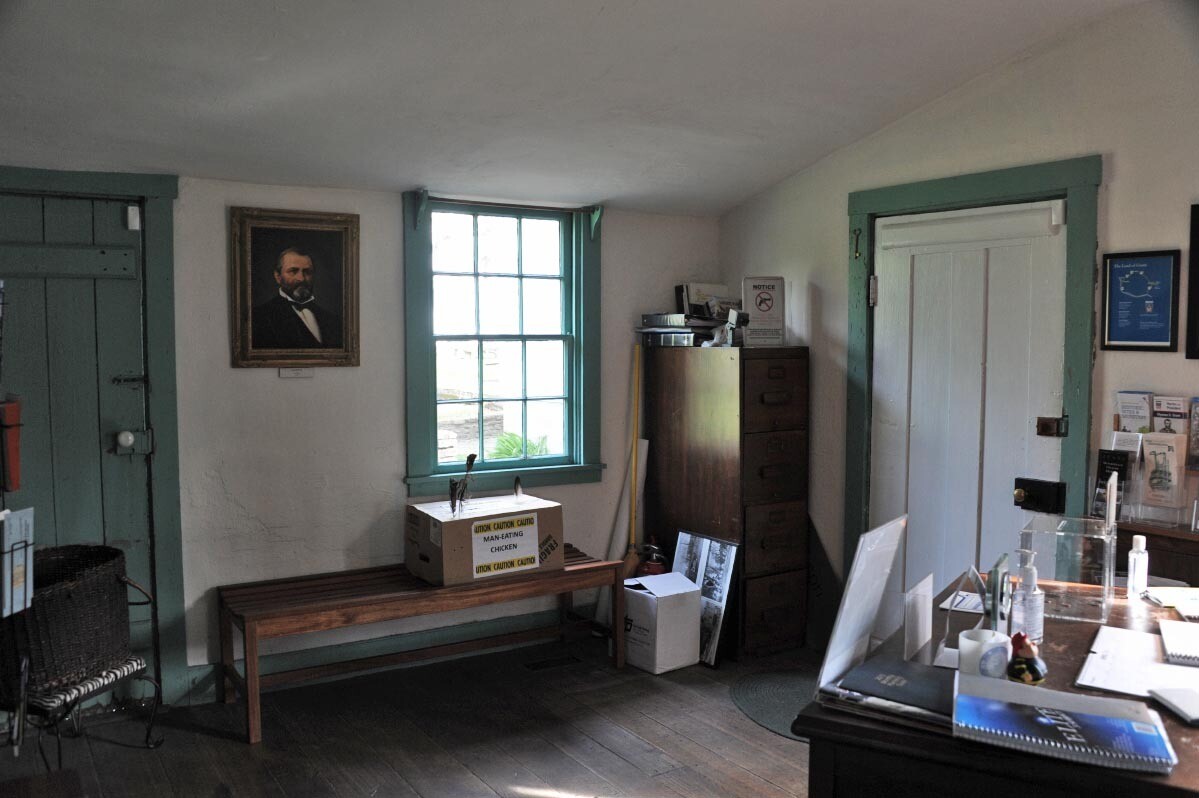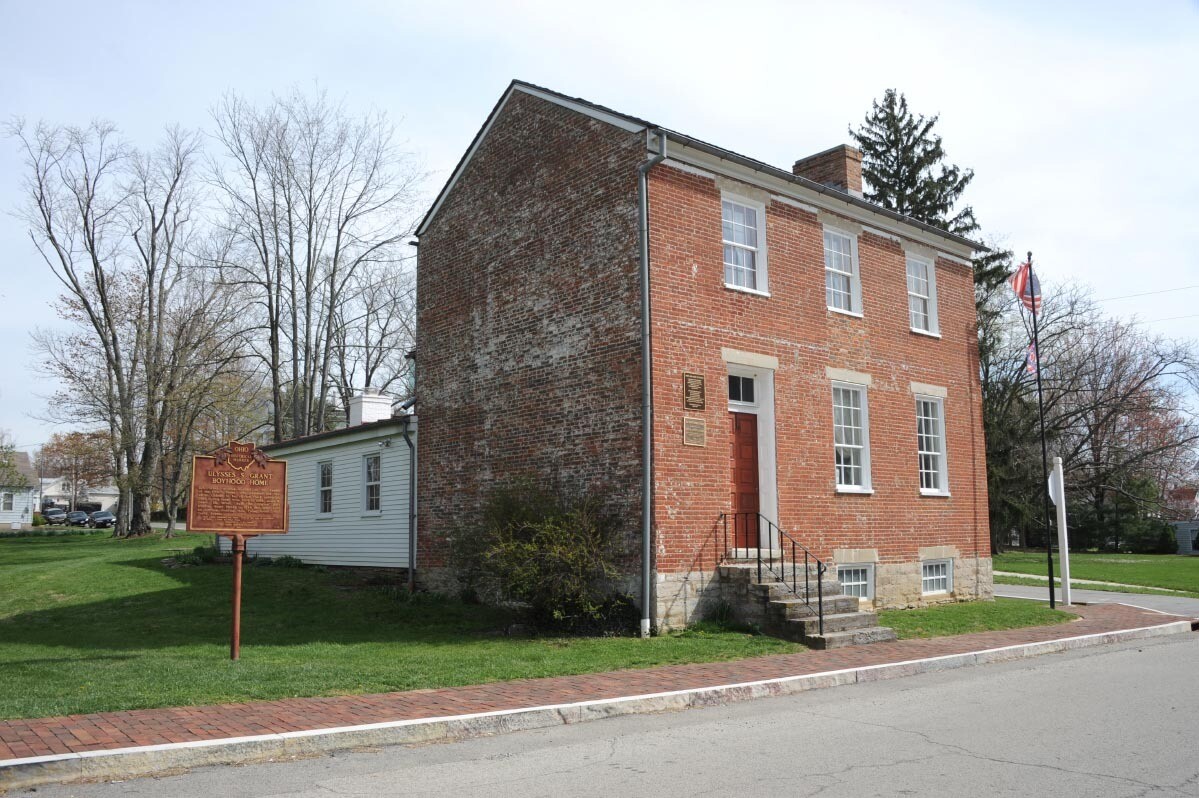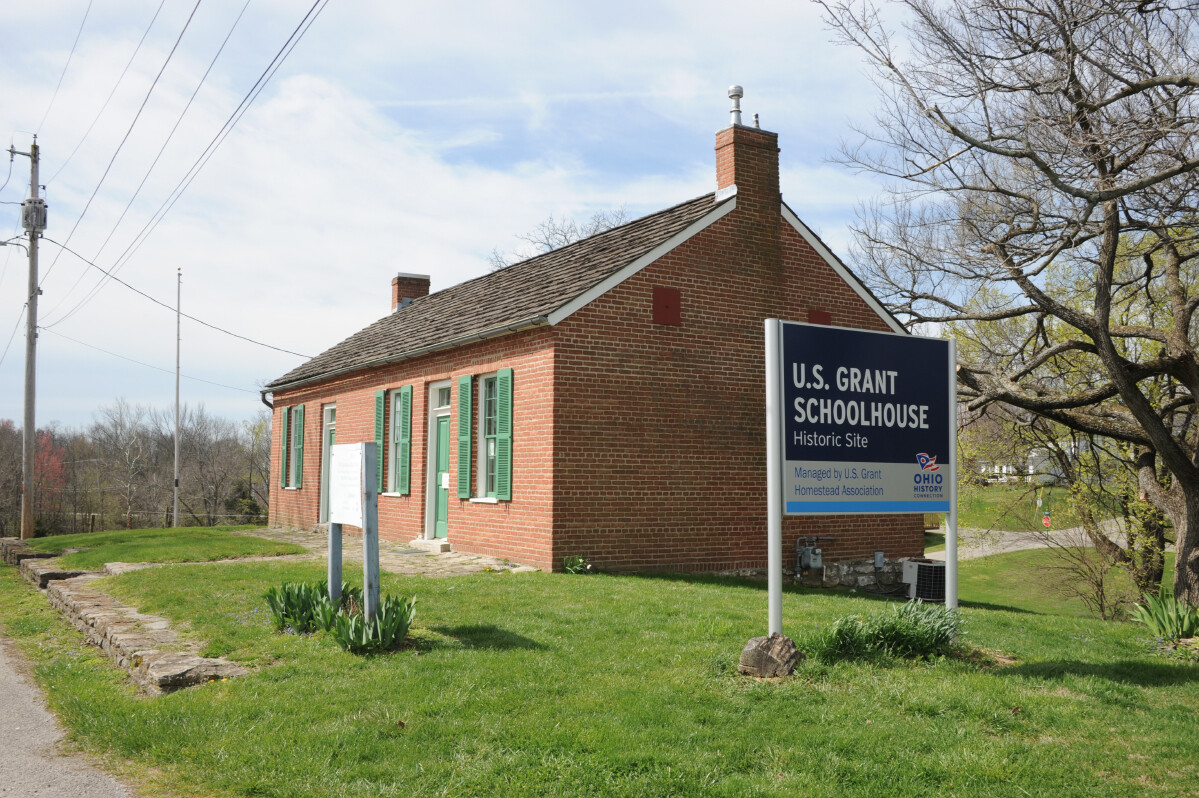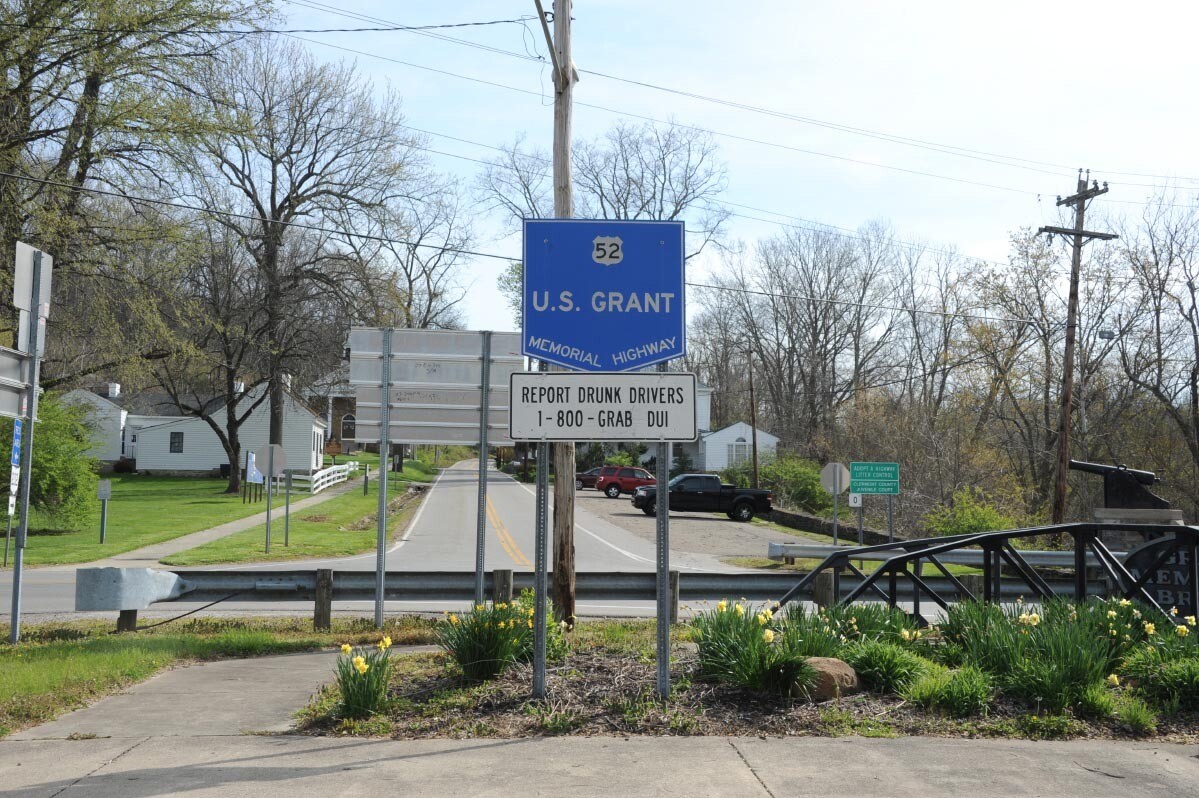
Ulysses S. Grant was born in this small house at Point Pleasant, on Ohio’s frontier, in 1822. His father, who worked in a nearby tannery, rented it for $2 per month.

Though many have come from around the country to see it, this house, too, has seen a lot of the country.

After Grant died, in 1885, the house was purchased by a riverboat captain, who moved it onto a barge and took it downriver to Cincinnati, where it was displayed as part of the Ohio Centennial Exposition. After that it traveled to expos and fairs around the country, mostly by railroad, including the 1893 World’s Fair in Chicago.

Soon after that the house was purchased by a businessman and history buff from Columbus who brought it to the Columbus fairgrounds. He gave it to the state, which covered it with a large brick and glass structure, and opened it to the public as the Grant Memorial Building, in 1896. It stayed there, on display, for more than 30 years.

Back at the actual birthplace cabin site, in Point Pleasant, where a small monument was installed in 1907, a movement was afoot to bring the cabin back, spurred on by a well-attended event held there for Grant’s 100th birthday, in 1922, where President Harding spoke.

But efforts dragged on, so they built a replica in 1927 instead. Nine years later, an agreement was reached, and the replica was removed to make space for the assembly of the original cabin, shipped overland in pieces, then opened to the public.

The cabin has had its ups and downs since– flooded, defunded, restored, then worn down again–but it is now on the National Register of Historic Places, and is in pretty good shape, run by the state historical society.

The cabin was Grant’s home for just about one year. In 1823 his family moved to Georgetown, Ohio, where he lived until he was 17, mostly in this house, which is his official boyhood home, preserved by the U.S. Grant Homestead Association.

They also own and maintain the schoolhouse Grant did his learning in from the age of 7 to 13, after which he went to other schools, then to West Point at the age of 17, in 1839.

Grant graduated from West Point in 1843 and began the military career that made him famous, starting with the Mexican War, and ending with the Civil War. Though he was posted all over, he married in 1848.

His wife was born and raised on her father’s plantation near St. Louis, known as White Haven. She returned here often to give birth to their children, or when she was unable to be with Grant on his military postings.

For five years, Grant stayed here with her, to help raise their young family, managing the farm for his father-in-law, with the help of a few dozen slaves.

Today ten acres of the plantation is owned and managed by the National Park Service as the Ulysses S. Grant National Historic Site, with a visitor center and lots of recreated and preserved structures.

Most of the old plantation remains in private hands, as part of the estate of the Busch family of the Anheuser-Busch Company, the largest beer maker in the country, headquartered in St. Louis.

There are family mansions on the property, but also a theme park called Grant’s Farm, which has been open since the 1950s, with exotic animals, tram rides, petting zoos, and festive German restaurants and gift shops.

Also on site is a cabin called Hardscrabble, which was built by Ulysses S. Grant on another part of the property and later relocated to Grant's Farm. Their brochure claims that it’s the only remaining structure that was hand-built by a US president prior to assuming office.

After Grant’s second term as president ended in 1877, the couple toured the world for two years, then returned to the United States, living in Manhattan, and to business investments that did not do so well.

Diagnosed with throat cancer in 1884, he headed to a mountain cabin north of Saratoga Spring, New York, to write his memoirs, which his friend, Mark Twain, offered to publish with 75% of the profits going to Grant, to help him with his debts. Grant died just a few days after completing it, in 1885.

The book ended up doing very well, and helped his heirs considerably. The cottage he wrote it in is now a state historic site, on grounds that lie behind the gates of a closed prison.

Grant’s tomb in Manhattan was completed in 1897, and is managed by the National Park Service. It is the largest mausoleum in the country.

His wife Julia, the first First Lady to publish her memoirs, lies next to him.
